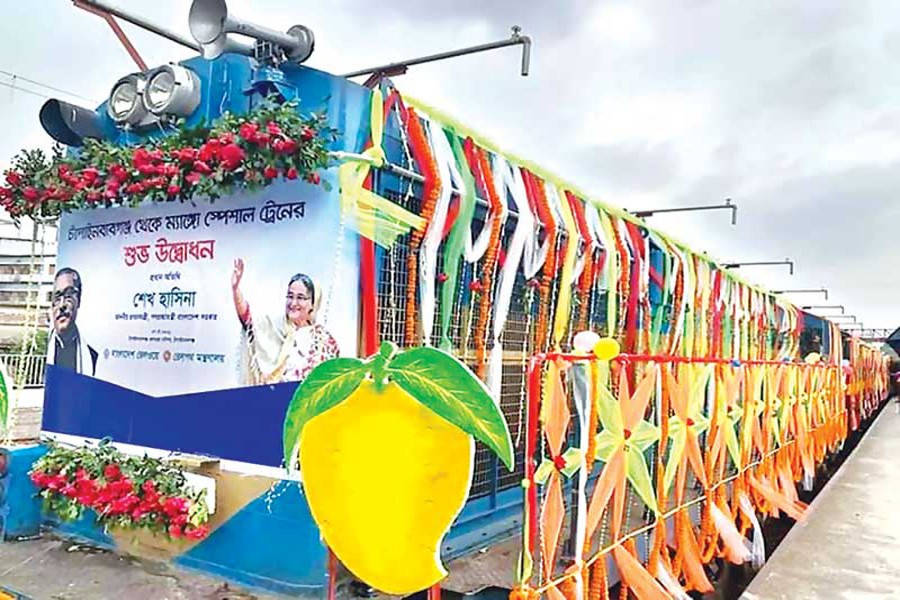So, a new epithet has found its place in our lexicon. It looks more like a term rather than an epithet or two nouns coined together, because it never happened anywhere before. Indeed mango and train have come together to lead to a chemistry worth savouring. It is mango train, to be precise. Both are nouns and still the king of fruits as an epithet has added prestige to a particular transport not enjoying a great reputation in this country.
Perhaps this would never have happened, had coronavirus not disrupted lives and livelihoods in such an unprecedented order. Rajshahi's Chapai Nawabganj and Natore belt has traditionally been the producer of the best quality of mango. Now itself a district, Chapai Nawabganj once was a part of Maldah during the undivided India. Maldah is famous for mangoes. Today's Bangladesh part boasts the same legacy. But in recent years Satkhira, Nowgaon and Rangpur have also come to the spotlight for producing high quality mangoes. Rangpur, in particular, has earned quite a fame for its brand name Haribhanga (pot-crasher). Yet the Rajshahi belt still maintains a healthy lead over other mango-producing zones both in quantity and quality.
Corona has dampened the huge business of mango for two successive years. Last year owners of mango orchards incurred losses because of an untimely storm and dull business. This year yield is good but the spread of coronavirus in the border district has adversely affected mango business. Moreover, rain and rising temperature together have suddenly caused ripening of different varieties of mangoes at a time. Mercifully, Baneshwar, the area where the largest mango market in Rajshahi's Puthia is located has so far remained free from the coronavirus scourge.
Yet the fact is that wholesale trading has suffered because of lack of traders. Those who purchase orchards months before the mangoes start ripening are finding difficulty in transporting mangoes or attracting wholesale traders. Business is so sluggish that prices of mangoes are quite low. Once again, orchard owners, orchard purchasers or lessees and traders are in fear of incurring losses.
Amid this gloomy trade regime, the mango train has come as a God-send agent of deliverance. Specially devoted to transportation of the fruit, it is cheap, convenient and anti-damage to the cargoes. Online business can easily be carried out via this mode of transportation. Both wholesale traders and individual customers take advantage of this new-found facility. According to a report in the first 16 days, 272 tonnes of mangoes have been sent to Dhaka alone on the mango trains. By now the consignments may have crossed the 300-tonne mark. The Bangladesh Railway earned during those 16 days Tk 359,518.
Clearly, mango train has added an impetus to the otherwise dull mango business. Had the railway network been expanded countrywide, mango business would be robust enough notwithstanding the pandemic. There are wide areas in the country where mango grows scantily and are also of poor quality. Mangoes grown in the northern parts of the country enjoy high demand from those areas.
It is not mango alone, there are different fruits and vegetables that grow abundantly in some particular regions. Those are mostly perishable items. Trade in those items thrives on fast and demand-specific supply. Pineapple, tomato, water melon are some of these agricultural produce that might have gone from strength to strength depending on railway service. Trucks now used for transportation of commodities are very costly and this adds to the sale prices by 30 to 40 per cent above what would have been the price line in case of transportation by railway carriage.
In future the facility should be left open for transportation of all such perishable items. Who knows one day we will get pineapple trains, watermelon trains and so and so forth. The mango train has appeared as a precursor in keeping with its status. Let others follow according to their grading in the list of fruits and vegetables.


